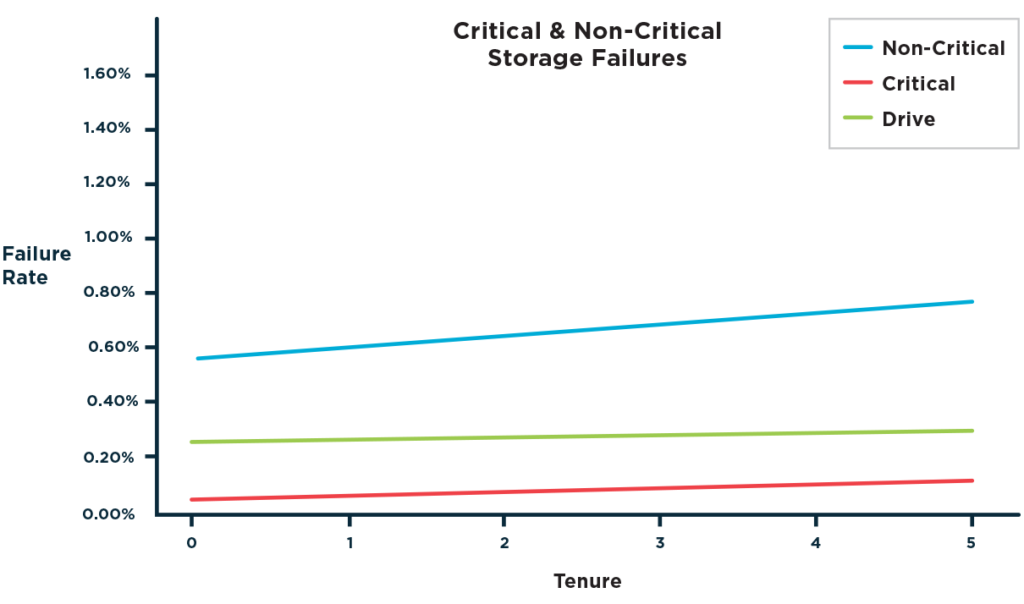Don’t jump too soon: understanding the lifecycle of data centre equipment
Sponsored by Service ExpressIf you had to choose between extending the life of equipment that meets your current business needs or spending tens of thousands on new hardware, what route would you take?

Businesses often choose to replace their server, storage or network equipment every three to five years to reduce risk and improve performance in the data centre. Despite what the OEM might recommend, there is an alternative.
While it may be common practice for IT teams to plan a hardware refresh every three years, this can waste time, resources, and critical IT budget dollars. Simply put, this approach doesn’t make sense if your equipment is performing well and meeting demands. Before taking the plunge, consider your needs and research alternatives such as third-party maintenance (TPM).
Extending the life of useful IT equipment
Replacing your server, storage and network hardware unnecessarily is a poor way of investing limited CapEx and OpEx budgets. The reality is that most server and storage equipment continues to meet demands far longer than the “standard” three years without risking performance or reliability.
Many IT professionals assume that failure rates are high once new hardware is released and rise again as it gets older, but this isn’t the case. Service Express has analysed equipment data from more than half a million devices over the past 15 years. The findings show that data-centre hardware is reliable for longer than you think.
Storage failures
Storage devices generally consist of three critical and non-critical components: CPUs, system boards, disk drives, power supplies and so on. The chart below shows that failure rates barely increase with time.

Over five years, critical storage failure rates are between 0.1 and 0.2 per cent, equivalent to about one failure out of 1,000 components every month. This is why it’s important to consider extending the life of your equipment instead of falling into the cycle of a premature refresh.
Equipment refreshes introduce possible difficulties for IT teams. New hardware means teams need time to focus on getting familiar with new interfaces, processes and skill sets. The switch to new equipment can reduce operating efficiencies and cost more in time and productivity. Before replacing equipment that is approaching end of life (EOL) or end of service life (EOSL), consider your support options.
Extending the life of your hardware investment plays an essential role in helping organisations implement eco-friendly practices to keep hardware out of landfills and protect the planet.
If it’s working, don’t replace it
If replacing equipment too soon is suboptimal, what is the alternative? The answer is simple – keep using your existing equipment. But you’ll want to prioritise using the right data centre support solution.
While OEMs offer extended warranty agreements, the coverage is expensive with limited flexibility. Companies such as Service Express help organisations get more life out of their server, storage and network investments, maintaining equipment with quality parts, experienced engineers and lower support costs.
The ongoing pandemic, supply chain slowdowns and labour issues are impacting budgets everywhere. Service Express’ 2022 Data Center & Infrastructure Report states budget reductions are one of the top three challenges for IT professionals. Using a third-party maintenance provider can save between 50 to 70 per cent compared with OEM support costs. These savings can be substantial and help your IT team cross lingering projects off their growing lists.
While offering lower maintenance costs than the OEMs, Service Express also makes customer service simple (no frustrating IVR systems) and dependable. To help ensure rapid repairs, hardware monitoring automates support by opening a service ticket when a failure occurs and immediately notifying a primary engineer to respond.
Planning for hardware longevity
Extend the life of your existing investment by rethinking your traditional refresh cycle. Adding a TPM solution to your IT strategy will help save critical resources while you meet demands. You can use the savings to fund other current initiatives or, when the time is right, for a strategic refresh. But only when it becomes necessary.
Service Express is a leading global data centre solutions provider. Its 2022 Data Center & Infrastructure Report is available here.

Business Reporter Team
Most Viewed
Winston House, 3rd Floor, Units 306-309, 2-4 Dollis Park, London, N3 1HF
23-29 Hendon Lane, London, N3 1RT
020 8349 4363
© 2025, Lyonsdown Limited. Business Reporter® is a registered trademark of Lyonsdown Ltd. VAT registration number: 830519543





